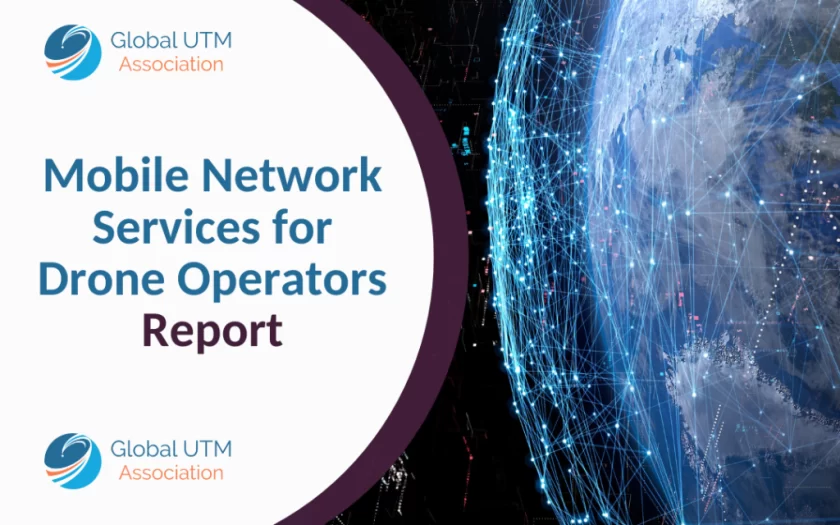A new report from the Global UTM Association (GUTMA) underscores the importance of increasing mobile network utilisation by drone operators.
The GUTMA Task Force on Mobile Network Services for Drone Operators report is a step towards advancing the use of mobile networks in drone operations, addressing the evolving needs of drone operators and identifying ways to align these with the capabilities of Mobile Network Operators (MNOs).
GUTMA says that reliable, robust air as well as ground connectivity are essential for command and control (C2), real-time data streaming, and adherence to regulatory frameworks like Uncrewed Traffic Management (UTM) and Network Remote Identification (NetRID).
“Looking towards the future, as drones become increasingly autonomous, the reliance on ground control stations may diminish or even become obsolete,” the report states. “All necessary operational data, including UTM, weather information, and Detect and Avoid (DAA) systems data, must be streamed directly to the drones in such scenarios. This shift will require mobile networks to be even more robust and reliable, ensuring that drones can operate independently and safely without human intervention at the ground level.”
Mobile networks, traditionally designed for ground-based users, present challenges for aerial operations, including signal interference and coverage limitations. However, advancements such as 5G offer significant improvements in throughput, latency, and connectivity.
“The adoption of 5G mobile networks for drone operations offers numerous advantages, including ultra-fast data transfer, enhanced connectivity, ultra-low latency, massive device connectivity, and improved coverage and mobility,” the report notes. “These benefits enable drones to perform a wide range of tasks more efficiently and effectively, making 5G an essential component in advancing drone technology and its applications across various industries. The improvements over 4G highlight 5G’s potential to revolutionise drone operations, paving the way for innovative and transformative uses in the future.”
In addition, advanced technology is emerging with higher frequency bands. The “Massive MIMO” technologies provide the capability to steer antenna patterns in a fully dynamic 3-dimensional way. GUTMA says that this will reduce the effects of the drone operating in the side lobes of the conventional base station antennas, which have a “beam” directed towards the actual airspace user. “This, in return, increases the signal contributions, reduces the interference, and enhances the handover performance and the latency due to cell connections caused by a high handover ratio for drones.” Massive MIMO systems are expected to be widely deployed once the density of drones in the airspace increases significantly.
The association is calling for greater collaboration between MNOs and drone operators and the report proposes a cross-function/value matrix to ensure both industries work together to meet operational needs and promote innovation.
“By leveraging new technologies and bridging gaps between the drone and telecom sectors, we can enhance the scalability, safety, and profitability of drone services,” GUTMA says.
The report was produced with the assistance of Task Force leader, DroneUp’s Sebastian Babiarz, as well as 17 Task Force members representing Airwayz, ARCGine Technologies, Dimetor, Droniq, Ericsson Drone Mobility, Flyvercity, FOCA, INVOLI, SkeyDrone, Openskies Aerial Technology, HHLA Sky, TII, Transport Canada, and Phoenix AI.
For more information




